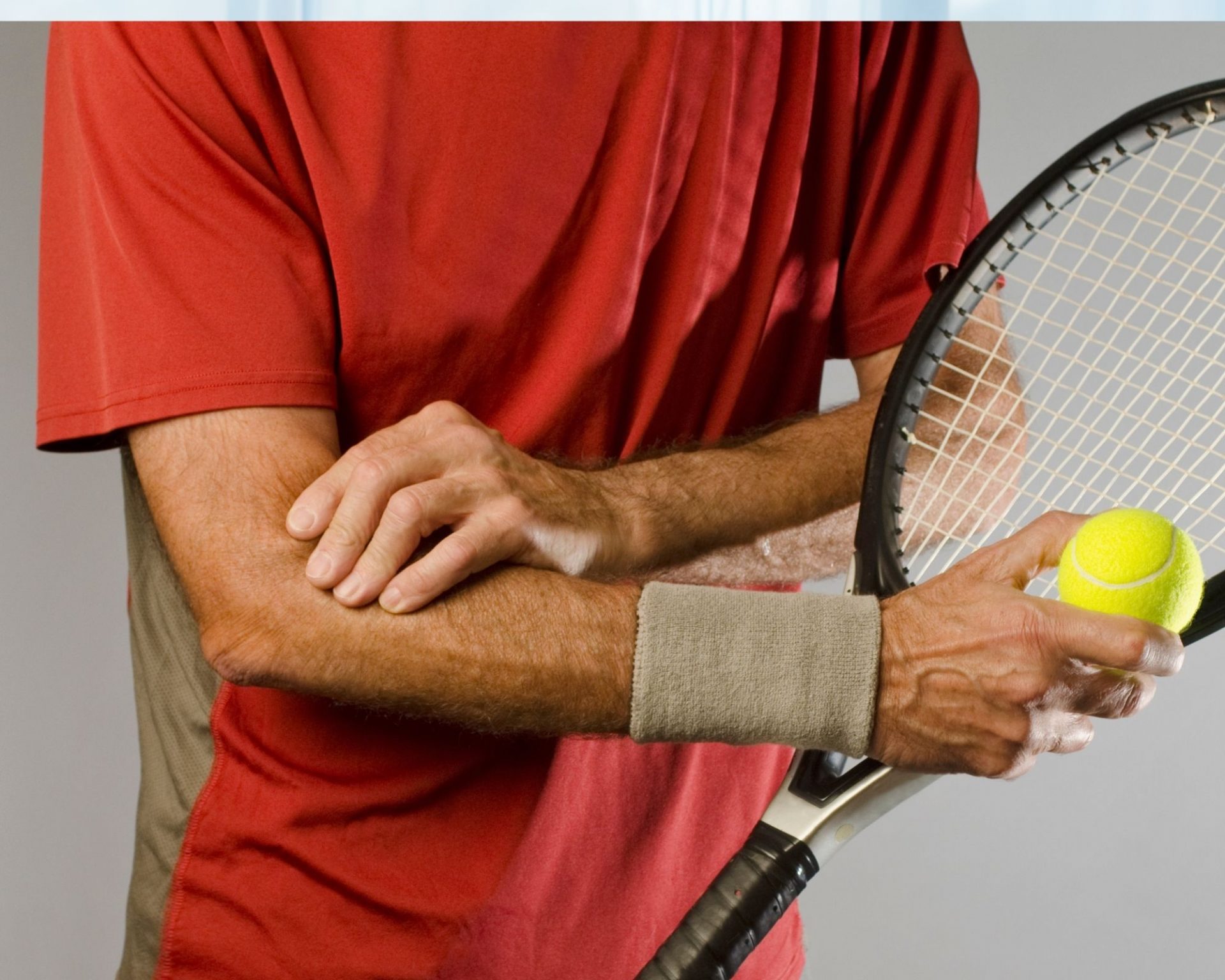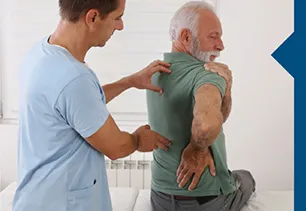
Lateral epicondylagia (tennis elbow) is an overuse injury involving tendons of the forearm (wrist extensor muscles) where they attach to the elbow (lateral epicondyle). These muscles are the muscles used to grip, twist, and carry objects. While playing tennis can be a cause of lateral epicondylitis (only 5% of cases), most cases are attributed to other repetitive activities such as prolonged computer use, repetitive and prolonged gripping, heavy lifting, repetitive vibration, baseball, swimming, racquet sports.
Symptoms
Common symptoms of lateral epicondylitis include tenderness/pain on the outer part of the elbow (lateral epicondyle) where the forearm extensor muscle tendons originate. Pain may radiate into the forearm and wrist. Weakness in the shoulder, wrist, and/or hand may also occur. Pain with lateral epicondylitis occurs particularly when gripping an object (such as using a fork and knife or holding a coffee cup) ,or with twisting motions like opening a jar or turning a doorknob.
Treatment
Treatment needs to focus not only on reducing pain, but correcting muscle imbalances that led to the condition in the first place. A physical therapist can help determine cause of dysfunction and develop an individualized treatment plan to decrease elbow pain and improve function.
- Ice massage (Link to video)
- Manual techniques including soft tissue mobilization, joint mobilizations and/or manipulation
- Shoulder joint
- Cervical spine and thoracic spine (if contributing to symptoms)
- Exercises to improve range of motion, strength, and stability (including postural muscles, shoulder and wrist muscles)
- Self-treatments including self-mobilizations
- Home exercise program to maintain gains made in therapy
- Technique modification with sport, vocation, and activities of daily living (functional training)
- Bracing/taping techniques to help off-load the tendon
- Radial nerve glides if assessment shows involvement
- Postural and movement analysis
Specific Exercises for Tennis Elbow
Eccentric wrist extension
Begin sitting in an upright position with one arm resting on a table, holding a dumbbell with your hand hanging off the edge, palm face down. Use your other hand to curl your wrist up, then slowly lower it back down, and repeat 20 times.
Palm Slide
With the forearm resting with palm down on a table, slide the fingertips along the table and lift the knuckles (while keeping your fingers straight). Repeat 10 times.
Wrist extensor stretch
Begin in a standing upright position with one arm in front of your body, palm facing the floor.
With your other hand, bend your wrist downward until you feel a stretch. Make sure to keep your elbow straight. Hold for 30 seconds and repeat 3 times.
Sup/Pro Bar
Begin sitting with your forearm resting on a table, holding a hammer. Slowly rotate your forearm back and forth. Make sure to keep your wrist straight throughout the movement. Repeat 20 times.
Finger extension
Loop a rubber band or theraband around the outside of the fingers and thumb. Slowly extend fingers and open hand. Slowly return to starting position. Repeat 20 times.
Self mobilization
Place affected arm on a wall supported to right above the elbow (elbow should be off the wall). Place a towel roll in the hand of the affected arm. Use your other hand to push (mobilize) the forearm in the direction of the wall (away from your body). While maintaining that pressure, squeeze the towel roll slowly, then relax. Repeat 30 towel squeezes.
Physical therapy for tennis elbow (THINKING THIS IS A GOOD KEYWORD) can help get you back into the game or sipping that cup of coffee pain free! Call us at Lifeline Therapy to schedule your evaluation!

